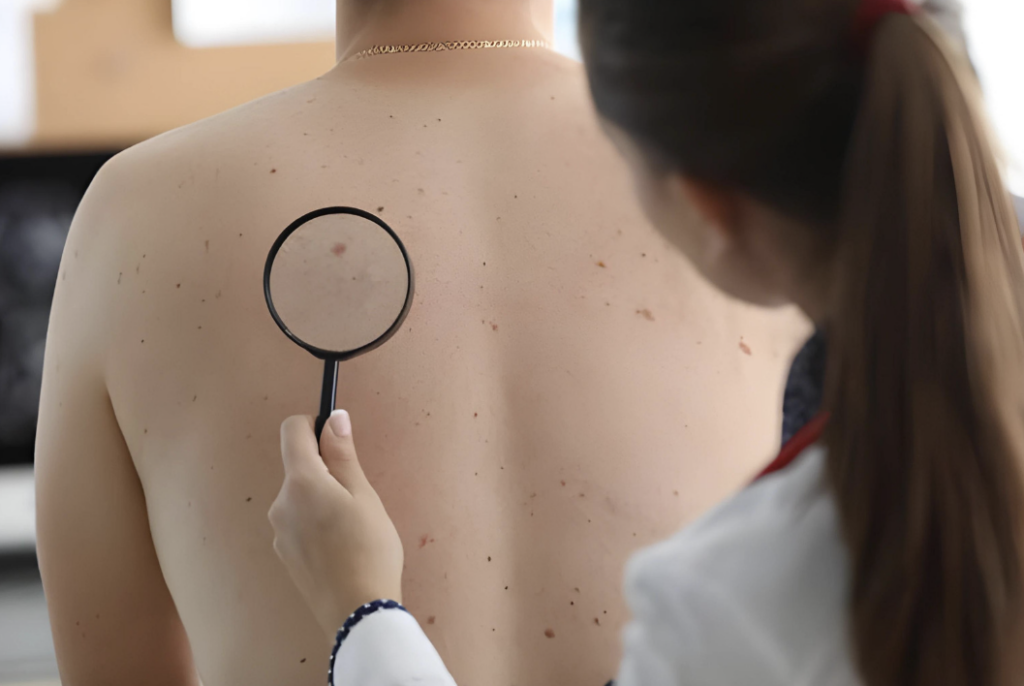Insurance
Does Health Insurance help cover your Dermatologist visits
Do you have a skin condition or require a routine check-up with a dermatologist? Knowing whether your health insurance covers dermatological procedures can help you avoid unexpected charges. In this article, we will look at the subject, “Does health insurance cover dermatologist visits?”
Dermatology services may involve the diagnosis and treatment of a variety of skin diseases, including acne, eczema, and skin cancer screenings. Dermatology services may be covered differently depending on your insurance provider and plan. Some policies may cover all dermatological visits, while others may demand a fee or deductible.
Understanding your health insurance policy is essential for maximizing your benefits and reducing out-of-pocket spending. It is vital to know that certain operations, such as cosmetic dermatological treatments or elective procedures, may be excluded from insurance coverage.
To find out if your health insurance covers dermatologist appointments, consult your policy paperwork or contact your insurance provider directly. They can give you the most accurate information about your coverage and any associated charges.

Types of Dermatology Services Covered by Health Insurance
Health insurance coverage for dermatologist services varies according on the type of service required. Most insurance plans cover medically essential dermatologist visits, which include the diagnosis and treatment of skin issues that have an impact on your health and wellness.
Acne, eczema, psoriasis, dermatitis, and skin infections are some of the most common skin illnesses covered by health insurance. These illnesses may necessitate continuing care, including prescription drugs, which may be reimbursed by your insurer.
Skin cancer screenings are another important dermatology service that is usually covered by health insurance. Regular screenings are essential for early diagnosis and treatment of skin cancer, and most insurance companies acknowledge the value of preventative care in this regard.
Common Procedures Covered by Health Insurance
In addition to consultations and exams, many health insurance policies cover popular dermatology procedures. Biopsies, cryotherapy, excisions, and small operations are all possible techniques, depending on the medical requirement.
Biopsies are typically reimbursed by insurance because they are used to diagnose skin problems or rule out skin cancer. Cryotherapy, which includes freezing and killing aberrant skin cells, is frequently used to treat problems such as warts and pre-cancerous lesions.
Health insurance often covers excisions, which are the surgical removal of skin growths or lesions. This may involve the removal of moles, cysts, or skin cancer tumors. However, coverage can vary depending on the location, size, and form of the growth or lesion.

How to Check if Your Health Insurance Covers Dermatologist Visits
To determine if your health insurance covers dermatologist appointments, you can perform the following steps:
- Review your policy documents: Begin by carefully reviewing your health insurance policy documents. Look for details on coverage for specialist visits, dermatology services, and any restrictions or conditions that may apply.
- Contact your insurance provider: If you have any issues or need clarification, contact your insurance provider directly. They will have the most precise information about your particular plan and can advise you on coverage and prices.
- Check the provider’s network: Check to see if the dermatologist you want to see is in network with your insurance plan. In-network providers typically have lower costs and better coverage than out-of-network providers.
- Understand copayments and deductibles: Learn about any copayments or deductibles that may apply to dermatology visits. Knowing these prices in advance will help you organize your budget and avoid unexpected expenses.
Tips for Navigating Health Insurance Coverage for Dermatology
Navigating health insurance coverage for dermatology can sometimes be challenging, but there are a few tips that can help make the process easier:
- Understand your coverage: Take the time to fully understand your health insurance’s coverage for dermatological services. This includes understanding which services are covered, any restrictions or regulations, and any associated charges.
- Keep track of documents: Keep copies of all paperwork from your dermatologist appointments, including explanations of benefits (EOBs), invoices, and receipts. These documents might help you manage your costs and resolve any billing difficulties with your insurance carrier.
- Communicate with your dermatologist: Discuss your insurance coverage with your dermatologist before undergoing any surgeries or treatments. They can assist you understand what is covered and work with your insurance carrier to guarantee accurate invoicing.
- Appeal if necessary: If your health insurance company denies coverage for a dermatology procedure that you believe should be covered, do not hesitate to appeal the decision. Provide any supporting material, such as medical records or letters from your dermatologist, to help your case.

Alternatives for Those Without Health Insurance Coverage
If you don’t have health insurance coverage for dermatology services, there are still options available to you:
- Community health clinics: Many localities have clinics that provide low-cost or free dermatological care to people without insurance. These clinics are frequently staffed by volunteer healthcare providers and can offer critical care for skin disorders.
- Sliding fee scales: Some dermatology firms provide sliding pricing ranges based on income. These scales vary the cost of services based on your financial situation, making dermatology more accessible.
- Patient support programs: Pharmaceutical firms and non-profit groups may offer pharmaceuticals or financial assistance to people who are unable to pay dermatology treatments.
- Payment plans: If you are unable to pay for services in full, speak with your dermatologist about setting up a payment plan. Many clinicians are eager to collaborate with patients to make healthcare more accessible.
Additional Resources for Understanding Health Insurance Coverage
Understanding health insurance coverage can be challenging, but there are resources available to help:
- Healthcare.gov: TheHealthcare.gov is the official website for the Health Insurance Marketplace, which provides information on health insurance options, enrollment, and eligibility.
- National Association of Insurance Commissioners (NAIC): The National Association of Insurance Commissioners The NAIC offers consumer materials and tools to help you understand health insurance coverage and navigate the intricacies of insurance.
- State Insurance Department: Contact your state’s insurance department for information on its regulations and resources.
- Local help programs: Some states or local governments provide assistance programs to people who cannot afford health insurance. These initiatives may offer discounted insurance or direct cash help.

Frequently Asked Questions about Health Insurance Coverage for Dermatology
- Q: Are cosmetic dermatology procedures covered by health insurance?
A: In general, cosmetic dermatology procedures are not covered by health insurance as they are considered elective and not medically necessary. - Q: Can I go directly to a dermatologist without a referral from my primary care physician?
A: Many health insurance plans allow you to see a dermatologist without a referral, but it’s always best to check with your insurance provider to confirm the requirements of your specific plan. - Q: Will my health insurance cover the cost of prescription medications prescribed by a dermatologist?
A: Most health insurance plans provide coverage for necessary prescription medications, including those prescribed by a dermatologist. However, it’s important to check your plan’s formulary to ensure the medications are covered. - Q: Can I switch health insurance plans if my current plan does not cover dermatology services?
A: Depending on your circumstances, you may be able to switch health insurance plans during the open enrollment period or through a qualifying life event. However, it’s important to carefully review the coverage and benefits of any new plan before making the switch.
Conclusion
Understanding your health insurance coverage for dermatology services is critical for controlling your healthcare costs and receiving the care you require. You may make more educated healthcare decisions by checking your policy documentation, contacting your insurance provider, and being familiar with the coverage and expenses connected with dermatology consultations.
Remember to talk honestly with your dermatologist, maintain track of your papers, and consider other treatments if you do not have insurance. By following these steps, you can negotiate the complexity of health insurance and ensure you get the dermatology care you need without incurring unforeseen financial costs.
Trusted Health, Wellness, and Medical advice for your well-being


